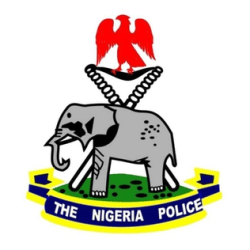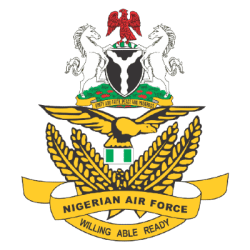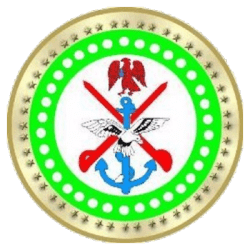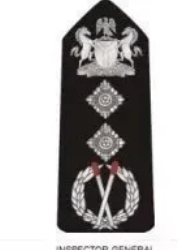The origin of the Nigerian Navy could be traced to the Marine Department of the Royal Navy established in 1887 as a quasi-military organization, which combined the duties of the present-day Nigerian Ports Authority (NPA), the Nigerian Inland Waterways Authority and the Nigerian Navy. Elements of the Marine Department took part in military operations against the Germans in Cameroun during the First World War between 1914–1918.

However, the colonial administration disbanded the colonial Marine Department and the 250 officers and men of the disbanded Marine Department were put together to form the nucleus of the Nigerian Naval Force (NNF) in April 1956. The Force was later renamed Naval Defence Force (NDF) of Nigeria which commenced operation on 1 June 1956. On 1 August 1956, the first legislation on the Navy was passed by the House of Representatives and was assented to on 5 September 1956 by Sir James Robertson, the Governor-General of Nigeria. It was called the Nigerian Navy Ordinance.

The Ordinance re-designated the NNDF as the Royal Nigerian Navy. Consequently, on 1 May 1958, the NDF was legally established as a force and re-designated Royal Nigerian Navy (RNN) as a mark of allegiance to the Queen of England.
In 1963, when Nigeria became a republic, the prefix “Royal” was dropped and the name became the Nigerian Navy (NN). The modern day NN came into being legally through the Act of Parliament No 21 of 1964. At inception, the NN was statutorily required to patrol only 3 nautical miles, which was the limit of the territorial waters.
The post-independence Navy Act of 1964, formally established the NN and removed the limitation of the NN operations to the country’s territorial waters. However, the NN remained with a few patrol boats without evolving significantly into a multi-mission maritime arm of the Nigerian Armed Forces.
The 1999 Constitution of the Federal Republic of Nigeria and the Armed Forces Act CAP A20 and the National Defence Policy 2006 accordingly charged the NN with the defence of Nigeria by sea. These statutes also expanded NN roles to cover the full spectrum of military, policing and diplomatic functions of a modern navy. Performing these roles efficiently and effectively entails linkage and synergy with the Nigerian Army, the Nigerian Air Force and other relevant maritime security agencies.
The origin of the Nigerian Navy could be traced to the Marine Department of the Royal Navy established in 1887 as a quasi-military organization, which combined the duties of the present-day Nigerian Ports Authority (NPA), the Nigerian Inland Waterways Authority and the Nigerian Navy.
Elements of the Marine Department took part in military operations against the Germans in Cameroun during the First World War between 1914–1918. However, the colonial administration disbanded the colonial Marine Department and the 250 officers and men of the disbanded Marine Department were put together to form the nucleus of the Nigerian Naval Force (NNF) in April 1956.
The Force was later renamed Naval Defence Force (NDF) of Nigeria which commenced operation on 1 June 1956. On 1 August 1956, the first legislation on the Navy was passed by the House of Representatives and was assented to on 5 September 1956 by Sir James Robertson, the Governor-General of Nigeria. It was called the Nigerian Navy Ordinance.
The Ordinance re-designated the NNDF as the Royal Nigerian Navy. Consequently, on 1 May 1958, the NDF was legally established as a force and re-designated Royal Nigerian Navy (RNN) as a mark of allegiance to the Queen of England.
In 1963, when Nigeria became a republic, the prefix “Royal” was dropped and the name became the Nigerian Navy (NN). The modern day NN came into being legally through the Act of Parliament No 21 of 1964. At inception, the NN was statutorily required to patrol only 3 nautical miles, which was the limit of the territorial waters.
The post-independence Navy Act of 1964, formally established the NN and removed the limitation of the NN operations to the country’s territorial waters. However, the NN remained with a few patrol boats without evolving significantly into a multi-mission maritime arm of the Nigerian Armed Forces.
The 1999 Constitution of the Federal Republic of Nigeria and the Armed Forces Act CAP A20 and the National Defence Policy 2006 accordingly charged the NN with the defence of Nigeria by sea. These statutes also expanded NN roles to cover the full spectrum of military, policing and diplomatic functions of a modern navy.
Performing these roles efficiently and effectively entails linkage and synergy with the Nigerian Army, the Nigerian Air Force and other relevant maritime security agencies.












